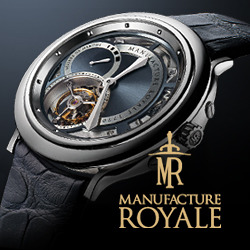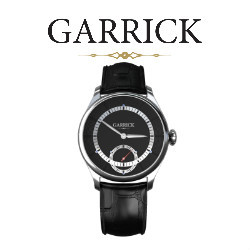Discussing watches with Urwerk’s Felix Baumgartner and Martin Frei is a throwback to the 1960s. All that was missing when I met the pair at Marcus was a hookah filled with Michoacan and a soundtrack by Earth Opera. Their Swiss-German accents added to the “vibe”: it was like a reading of a Hermann Hesse novel. In particular: The Glass Bead Game.
Watchmaker Baumgartner, born in Schaffhausen and in his father’s footsteps, and Frei, the industrial designer who creates Urwerk’s visuals, do not treat watchmaking as anything that passes for “conventional”. As Baumgartner puts it, “All of the functions and complications of the past have been perfected. We want to make the complications of today.” For those with even the weakest grasp of horological history, it’s a challenge akin to reinventing the wheel. For the two, the manufacturing of limited production timepieces is – as Hesse would surely recognise – almost an intellectual game.
Their “satellite” watches have been around for just over a decade; while not quite “familiar”, their method of showing the time no longer strikes enthusiasts as bizarre. Rotating discs connected to a centrally-pivoting trio or quartet of arms line up their numbers with an arced scale along the bottom. The number on the disc is the hour; the pointer below it indicates the minutes, as shown on the arc. Simple, clever and almost intuitive, it is still a break from either easy-to-read hands or plain digits.
If one points out that too many new watches are almost impossible to decipher, Felix admits that, “You see a lot of the new brands, and sure enough, they are very tough to read. With the satellites, we started 12 years ago – we are no longer a start up – the system is actually a very comfortable way of reading the time. With only one glance, you know immediately what time it is. And,” he adds, “you don’t have to turn your wrist to look at the dial.” He feels that an owner will be totally comfortable with the layout “after only two or three days.”
Frei explains Urwerk’s approach to the display philosophy – no dial, no hands – in terms that reinforce the Hesse-like fascination with intellectual complexity. “When you show time in a different way, you experience time in a different way – like speaking different languages.” If you let him, Frei can also illustrate how different cultures, during different eras, wouldn’t even recognise our linear approach to the passage of our lives.
Then, it’s back to earth. Frei, now speaking as one with a background in graphics and the visual arts, offers a less-metaphysical justification for Urwerk’s battle against convention. “By changing the way we display time, we can also change the shape of the case.” And Urwerk’s cases owe nothing to anyone else. With one accidental exception: the new CC1 King Cobra.
Baumgartner cites the speedometers in early Volvos and “an old Dodge in Alfred Hitchcock’s The Birds” as inspiration, and Frei reveals that, “When I first made the design, back in 1998, I was thinking of cars – I didn’t even know this piece existed.” He points to an image of the Cobra, a Louis Cottier/Gilbert Albert co-designed prototype watch from 1958, now housed in the Patek Philippe Museum.
Both Cottier and Gilbert Albert had impeccable track records for innovative watches, Cottier redefining watches with multiple time zones, Albert demonstrating that watches needn’t feature symmetrical cases. Their concept, with a horizontal, linear readout, looked just like the speedometer format popular in the USA, also foreshadowed the earliest LED watches arriving two decades later. Now, through a series of mechanical developments unavailable to Cottier and Albert, Urwerk have produced a perfectly functioning concoction of gears, rollers, racks and cams that put a ‘61 Cadillac dashboard on your wrist. You read the time of day exactly as any character from Mad Men would read his speed. And if you speak to Martin or Felix, you’ll know it makes perfectly good sense.
The Urwerk CC1 King Cobra will be produced in 25 examples each in Black gold and
(Hedge, 2009)










